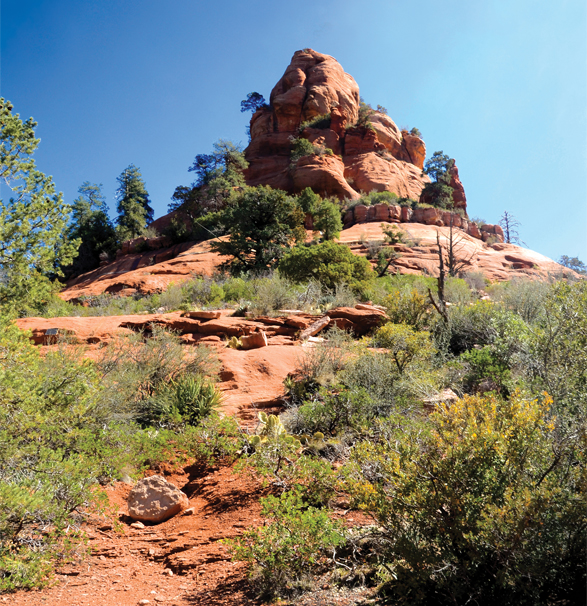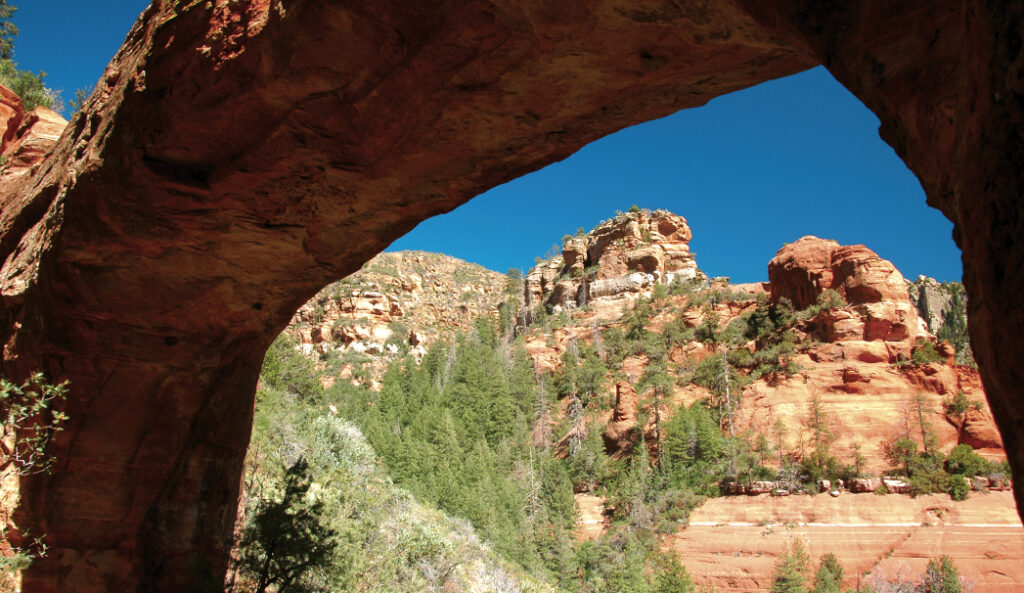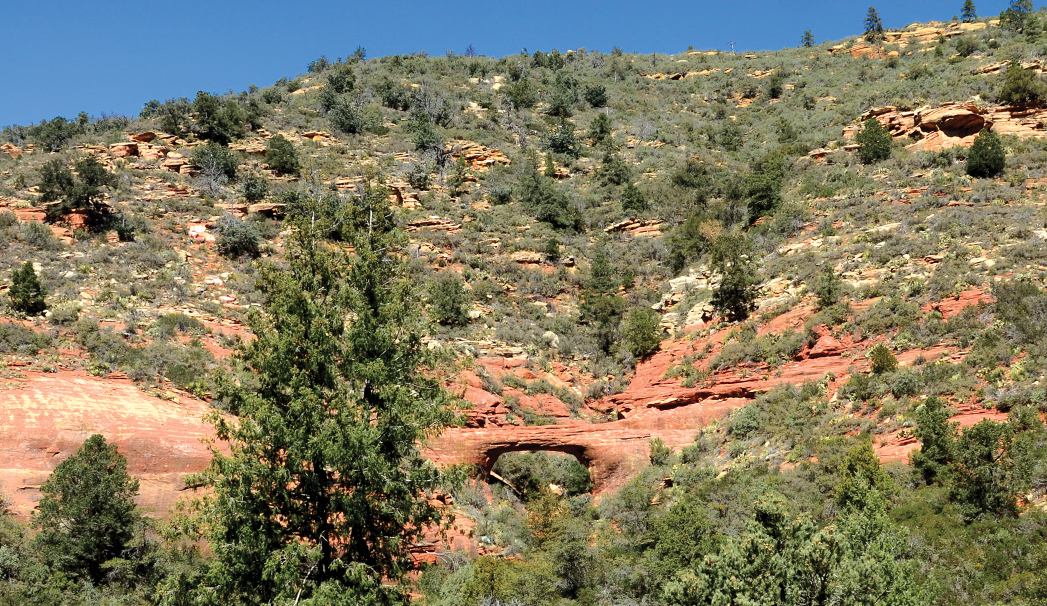Accessing the Vultee Arch Trailhead is a challenge and one of the hardest parts of this easy trail. The only way to reach it is with a high-clearance four-wheel drive vehicle. Yes, you need both high clearance and four-wheel-drive and yes, that was how we reached the trailhead. Your other options include via connector trails or by walking the dusty 4-plus-mile Vultee Arch Road (FR 152). The upside: Even during the busy spring season, we practically had the entire trail to ourselves. If you want a backcountry experience, here you go. Although the trail is relatively shady, you’ll still want to bring plenty of water. We encountered some overgrowth and would recommend wearing long pants.

A red rock formation as seen from the Vultee Arch Trail. This trail is mostly shaded and is an ideal warm weather hike.
Within a couple hundred feet of starting your hike, you enter Wilderness Area. The trail is flat with a tangle of manzanita bushes growing on both sides. During our hike, the manzanita was in bloom, so we were surrounded by tiny pink flowers that smelled like honey. Vultee Arch Trail runs parallel to a streambed that is dry much of the year, though that wasn’t the case on our hike. It was a treat to look over our shoulders at nearby Wilson Mountain, which still had some snow on the top, and see wet patches where the snowmelt was making its journey to Dry Creek and its tributaries. We actually counted 11 stream crossings on this trail, but they were all shallow and easy to navigate. The trail remains relatively flat throughout the hike, meandering through a forest of Ponderosa pines and alligator bark junipers. At about 0.75 miles, the trail weaves through a strand of more Ponderosa pines and oak trees, some of which still bear scars from the 1996 Arch fire.

A red rock formation peeks out from the Vultee Arch Trail. This is an easy hike that runs along the bottom of Sterling Canyon.
After hiking 1.72 miles, we came to the junction of Vultee Arch and Sterling Pass trails. Continue on Vultee Arch and in just a few steps, look to the left to see the trail’s namesake arch in the red rocks and forest above you. This is the prettiest part of the trail with plenty of picnic spots. Climb the red rock knoll to your right to find the plaque memorializing Gerard “Jerry” Vultee and his wife, Sylvia. The pioneer aviators died in a plane crash near the site in 1938. The trail officially ends here, though it’s possible to continue for another quarter of a mile to reach the arch and even walk across it (not for the faint of heart or those with a fear of heights). The trail leading to the arch is very steep and rocky – hike it at your own risk. Return the way you came for a 3.5- to 4-mile round-trip (depending on your thirst for adventure) journey.
Please check with the Red Rock Ranger District of Coconino National Forest before planning your hike. For more information visit: https://www.fs.usda.gov/recarea/coconino/recarea/?recid=54892




